#urban-renaissance
Text
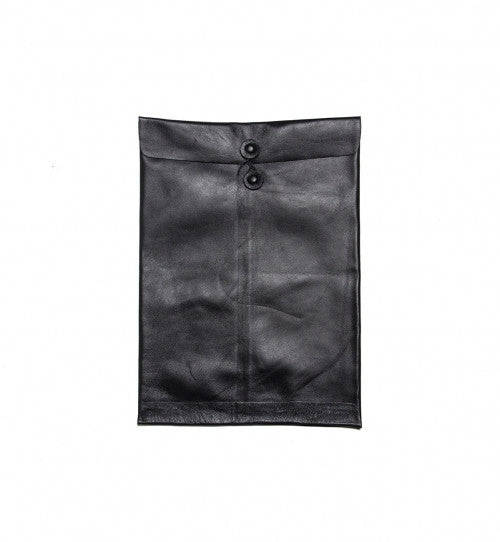

#Documents#urban-renaissance#Classified#I Plead The Fifth#[REDACTED]#TSA#FBI#DHS#SSA#EPA#Environmental Protection Agency#Social Security Administration#Department of Homeland Security#Federal Bureau of Investigation#2023#2022#2001#Transportation Security Administration#dcsa#Defense Counterintelligence Security Agency#OPM#Office of Personnel Management#Black Scale#BLVCKSCVLE#Business
0 notes
Note
Please tell me more about neighbourhood PMCs in renaissance Italy
It would be my pleasure! (My research into this owes a lot to the excellent Power and Imagination: City-States in Renaissance Italy by Lauro Martines.)

The first thing to note that, unlike the condottieri, these were not private military companies. Rather, the neighborhood military companies (in the sense of a military unit, rather than a profit-making entity) were self-defense organizations formed as part of a centuries-long political struggle for control over the urban commune between the signorile (the urban chivalry)/nobilita (the urban nobility) and the populo (the guilded middle class, who claimed to speak on behalf of "the people").
This conflict followed much the same logic that had given rise to the medieval commune in the first place. Legally, the communes had started as mutual defense pacts between the signorile and the cives (the free citizens of the city) against the rural feudal nobility, which had given these groups the military and political muscle to push out the marquises and viscounts and barons and claim exclusive authority over the tax system, the judicial system, and the military.
So it made sense that, once they had vanquished their enemies and established the commune as the sovereign, both sides would use the same tactic in their struggle over which of them would rule the commune that ruled the city. The signorile and nobilita formed themselves into consorteria or "tower societies," by which ancient families allied with one another (complete with dynastic marriage alliances!) to build and garrison the towers with the knights, squires, men-at-arms, and bravi of their households. These phallic castle substitutes were incredibly formidable within the context of urban warfare, as relatively small numbers of men with crossbows could rain down hell on besiegers from the upper windows and bridges between towers, even as the poor bastards on the ground tried to force the heavy doors down below.
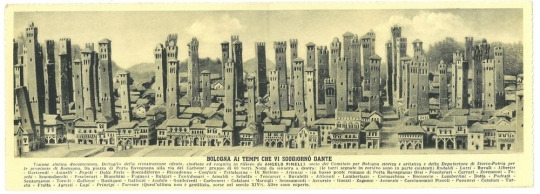
To combat noble domination of communal government, achieve direct representation on the political councils, establish equity of taxation and regulate interest rates, and enforce legal equality between nobility and citizenry, the populo formed themselves into guilds to build alliances between merchants and artisans in the same industries. However, these amateur soldiers struggled to fight on even footing with fully-trained and well-equipped professional soldiers, and the guild militias were frequently defeated.
To solve their military dilemma, the populo engaged in political coalition-building with the oldest units of the urban commune: the neighborhoods. When the cities of medieval Italy were originally founded, they had been rather decentralized transplantations of the rural villages, where before people had any conception of a city-wide collective their primary allegiance was to their neighborhood. As can still be seen in the Palio di Siena to this day, these contrade built a strong identity based on local street gangs, the parish church, their traditional heraldry, and their traditional rivalries with the stronzi in the next contrade over. And whether they were maggiori, minori, or unguilded laborers, everyone in the city was a member of their contrade.
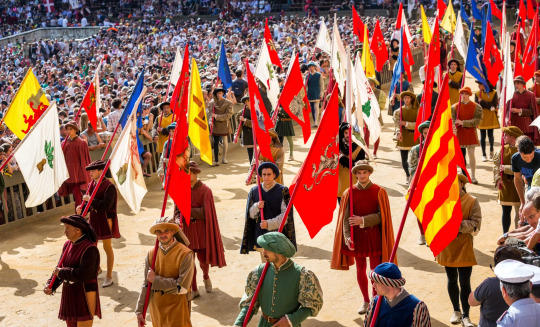
As Martines describes, the populo both recruited from (and borrowed the traditions of) the contrade to form their armed neighborhood companies into a force that would have the manpower, the discipline, and the morale to take on the consorteria:
"Every company had its distinctive banner and every house in the city was administratively under the sign of a company. A dragon, a whip, a serpent, a bull, a bounding horse, a lion, a ladder: these, in different colors and on contrasting fields, were some of the leitmotifs of the twenty different banners. They were emblazoned on individual shields and helmets. Rigorous regulations required guildsmen to keep their arms near at hand, above all in troubled times. The call to arms for the twenty companies was the ringing of a special bell, posted near the main public square. A standard-bearer, flanked by four lieutenants, was in command of each company."
To knit these companies organized by neighborhood into a single cohesive force, the lawyers' guilds within the populo created a state within a state, complete with written constitutions, guild charters, legal codes, legislative and executive councils. Under these constitutions, the populo's councils would elect a capitano del popolo, a professional soldier from outside the city who would serve as a politically-neutral commander, with a direct chain of command over the gonfaloniere and lieutenants of the neighborhood companies, to lead the populo against their noble would-be overlords.
And in commune after commune, the neighborhood companies made war against the consorteria, taking the towers one by one and turning them into fortresses of the populo. The victorious guilds turned their newly-won military might into political hegemony over the commune, stripping the nobilita of their power and privilege and forcing them either into submission or exile. Then they directed their veteran neighborhood companies outward to seize control of the rural hinterland from the feudal aristocracy, until the city had become city-state.
(Ironically, in the process, the populo gave birth to the condottieri, as the nobility who had lost their landed wealth and political power took their one remaining asset - their military training and equipment - and became professional mercenaries. But that's a story for another time...)
#history#historical analysis#renaissance history#renaissance fantasy#medieval cities#city-states#urban communes#guilds#city charters#guild charters#mercenaries#nobility#artisans#burgher rights#merchants
136 notes
·
View notes
Text
Monsters! Incidental Wedding Guests is an Urban Fantasy Romance. What happens when superheroes plan a wedding? Monsters, that's what.
Kennedy and Jason are ready to get married. They just have to deal with evaporating monsters first. Available for pre-order soon!
Sign up for our posts on our website: https://www.jeneric-designs.ca
Cover art by @pinkpiggy93
#Monsters! Incidental Wedding Guests#pinkpiggy93#artist#book#urban fantasy#romance book#Jen Desmarais#Éric Desmarais#authors#Presses Renaissance Press#Canadian#original#booktok#cover reveal
66 notes
·
View notes
Text
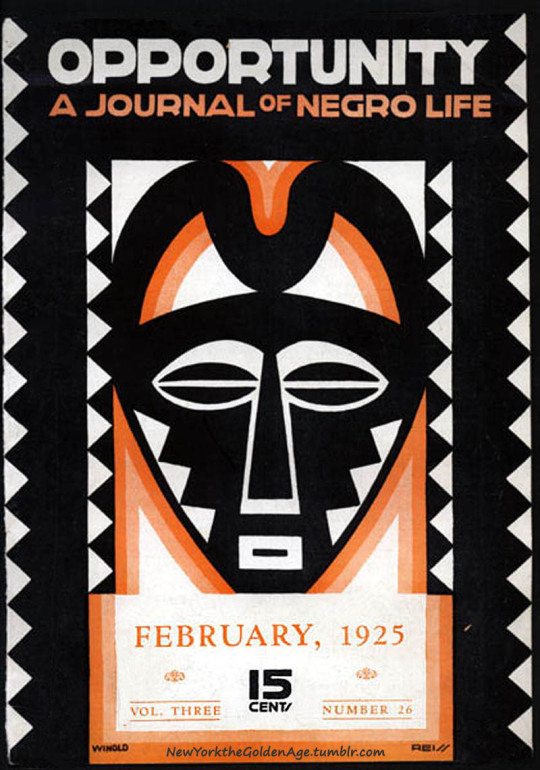
Opportunity: A Journal of Negro Life, February 1925, cover design by Winold Reiss. Opportunity was an academic journal published by the National Urban League. It acted as a sociological forum for the emerging topic of African-American studies and was known for fostering the literary culture during the Harlem Renaissance. It was published monthly from 1923 to 1942 and then quarterly through 1949.
Photo: winoldreiss.org
#vintage New York#1920s#Winold Reiss#Opportunity: Journal of Negro Life#Black publications#Harlem Renaissance#National Urban League#literary journal#literary magazine#Art Deco#magazine cover
42 notes
·
View notes
Text


the sky's all violet
give it some violence
#juno's net junk#november 2023#fuji finepix f455#digicam#lightroom#point and shoot#urban photography#vintage photography#original photographers#rococo#french architecture#renaissance art#italian renaissance#chateau de versailles#palace of versailles#royaltycore#early 2000s#small town gothic#midwestern gothic#southern gothic#rural landscape#abandoned places#small town america#interior design#avant garde#vintage americana#camcorder#vintage film#suburban gothic#cityscape
28 notes
·
View notes
Text
Pienza - Tuscany, Italy
The first city built as the Ideal City to maximise Human’s worth.
youtube
#travel#youtube#wanderlust#wonderjourneys#tourism#touristdestination#drone#dji#skypixel#pienza#tuscany#italytravel#Italy#toscana#italia#renaissance#urban planning#art#hiddengem#hidden gems#architecture
7 notes
·
View notes
Text
Raphael Sanzio da Urbino was born & died #OTD (6 Apr 1483 – 6 Apr 1520). His depiction of Justice in the Vatican's Sala di Costantino fresco mural (c.1519-20) replaces her traditional sword with...an ostrich. But why?

Detail of Raphael's fresco mural of Pope Urban I depicting Lady Justice (labled JVSTITIA) seated to his right, with her usual scales in left hand but with an ostrich in her right instead of the usual sword. Sala di Costantino, Vatican Palace, c.1519-20.
So here's how an ostrich got in there:
"Raphael’s oil mural Lady Justice in the Sala di Costantino, Vatican Palace, 1519-20. Replacing the traditional sword in Justice’s hand with a naturalistically-painted ostrich, Raphael paints an enigma. The ostrich had meant many things in the Middle Ages and Antiquity, but not justice. Instead, Raphael’s invention is based upon a Renaissance understanding of ancient Egyptian hieroglyphs. In ancient Egypt, the soul’s passage to the underworld was determined by weighing the heart against an ostrich feather [Ma'at's Feather of Truth], and so the hieroglyph for justice is an ostrich tail feather.* Raphael brought this arcane hieroglyph to life and playfully hid the tail, forcing the viewer to search for the meaning. Justice is labeled, but what is the bizarre exotic bird doing in the halls of power of the Vatican?" [from The Ostrich: An Unexpected Allegory]
There is lots more about this trans-cultural iconography in the book Raphael's Ostrich by Una Roman D’Elia (2016), the first chapter of which is available to read online here. (Despite the name, the book doesn't only focus on this particular ostrich, but offers a broad survey of ostrich iconography.)
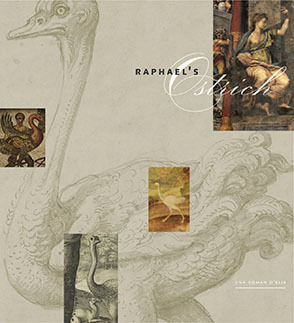
*Here is how that hieroglyph is currently interpeted (Gardiner number H6) - it's not a direct symbol for Justice, but as a symbol for Maat, who in turn was the goddess of truth, cosmic balance, and yes, justice.

#Raphael#Raphael Sanzio da Urbino#Renaissance art#Italian Renaissance art#Vatican art#Sala di Costantino#Vatican Palace#fresco#mural#painting#Pope Urban I#animal iconography#ostrich#bird#birds#birds in art#ancient Egypt#book recommendation#Amazon Associates#Maat#Ma'at#Egyptian mythology#Egyptian hieroglyphs#Justice#iconography#animal emblem#OTD#birthday post#deathday post#animals in art
36 notes
·
View notes
Text
reading this book on urban exploration and also stumbling onto a youtuber who is doing (and explaining!) literal ancient alchemy is doing something to my brain chemistry (positive)
#ROTATING MY BLORBOS EVEN FASTER.#THIS DUDE HANDCRAFTED A RENAISSANCE BLOW TORCH INCLUDING A CLAY OIL LAMP#HE'S OUT HERE REFINING POT-ASH WITH THE CRUCIBLE HE ALSO MADE#this would be Doing Things to me even if I didn't have a blorbo to connect it to but you fucking KNOW I'm on my melliwyk bullshit about it#the problem with the urban exploration book is that I am so much of a coward about Getting In Trouble#that reading about it is very exciting and inspiring but less actionable than 'I have GOT to get a workbench down here'#but it is giving my brain a lot of felix stuff to chew on#I guess the tl;dr is that the parts of my brain that reflect the gnomish drive to explore and discover and tinker and make and fix#is lighting the fuck up and it feels really good#about me#my OCs#melliwyk#felix#gnome stuff
6 notes
·
View notes
Text

#historical#architecture#art#ai#bustling activity#city square#digitalart#renaissance#aiart#urban life#grand buildings
2 notes
·
View notes
Text
Anyway about the vampires. Yeah I've been workshopping an AU where Rhea and Bob play roughly the same characters in a slightly different plot. In this story, vampirism causes the woman to accidentally kill her own client, and her husband takes the fall for it. Then, she makes the questionable choice of turning him, just so they can wait out his prison sentence without worrying that time or death will separate them.
In my lore, vampires can feed off of eachother; it's just dangerously easy to take too much and kill eachother in the process. Most vampires in this story only feed off eachother when they want to murder another vampire and absorb that enemy's powers. But our romantic leads eventually find themselves somewhere stranded and remote. And so the only choice is to sustain eachother... but it's a delicate process. To not take too much from the people you love, to not let the people you love take too much from you.
Both BCS and Twilight spend the first 80% of the narrative with the characters angsting about what a bad influence they are on eachother, and the final 20% discovering that no, actually pursuing pleasure and becoming a monster was the best thing that ever happened to our heroine. This bad boy set her free. The difference is that Breaking Dawn doesn't end with sending Bella on a 6 year guilt trip just for being a predator by nature. Which weirdly means that even if BCS is the better LOVE story, Twilight is the more feminist work. Like honestly I find it kind of offensive how most of Kim's character arc was spent equating female sexuality to criminality. Not that Twilight has great attitudes about sex either, but I'm more into the tongue-in-cheek fan interpretations anyway. The headcannons that instead of treating Bella like a blank Mary Sue, point out that actually she DOES have a personality... and she's kind of a selfish cunt. But that's not the same as being unrelatable!
#better call saul#mcwexler#jimmy mcgill#kim wexler#vampires#urban fantasy#paranormal romance#twilight#twilight renaissance#twilight breaking dawn#bella swan#edward cullen
4 notes
·
View notes
Photo

Lviv Silhouettes. Renaissance by Myron Yatsiv, 1983
#Lviv#urban landscape#Ukraine#Ukrainian art#Ukrainian graphic#Myron Yatsiv#1980s#Silhouette#renaissance
42 notes
·
View notes
Text

NAOMI CAMPBELL HAS YOUR PRETTY LITTLE SILVER DRESS FOR CLUB RENAISSANCE IN TEXAS // HOW BEYONCE INSPIRED CAMPBELL'S COLLABORATION WITH PRETTYLITTLETHING
SHOP HERE
IMPACT
#naomi campbell#PrettyLittleThing#Pretty Little Thing#nyfw2023#New York Fashion Week#Runway Show#Urban Fashion Sense#Collaboration#Collection#renaissance world tour#music#Disco#Pop Soul#Silver Dress#Style#Fashion#Inspiration
2 notes
·
View notes
Text
"Monsters! Incidental Wedding Guests" is an Urban Fantasy Romance. What happens when superheroes plan a wedding? Monsters, that's what.
Kennedy and Jason are ready to get married. They just have to deal with evaporating monsters first. Available for pre-order now!
Universal book link: https://www.jeneric-designs.ca/books-and-timeline/universal-book-links/#MIWG
Cover art by @pinkpiggy93
#Monsters! Incidental Wedding Guests#pinkpiggy93#artist#book#urban fantasy#romance book#superheroes#battle couple#Jen Desmarais#Éric Desmarais#authors#Presses Renaissance Press#Canadian#original#booktok
11 notes
·
View notes
Photo
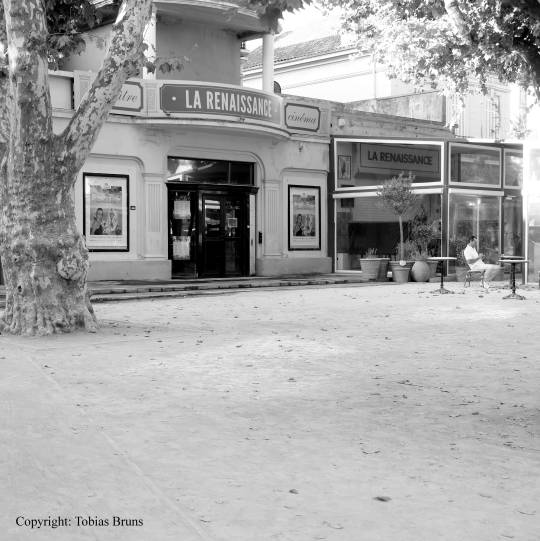
St. Tropez -2022-
#tobias bruns#photographers on tumblr#original photographers#st.tropez#france#Street Photography#black and white photography#urban landscape#urban photography#renaissance#mediterranean
9 notes
·
View notes
Text
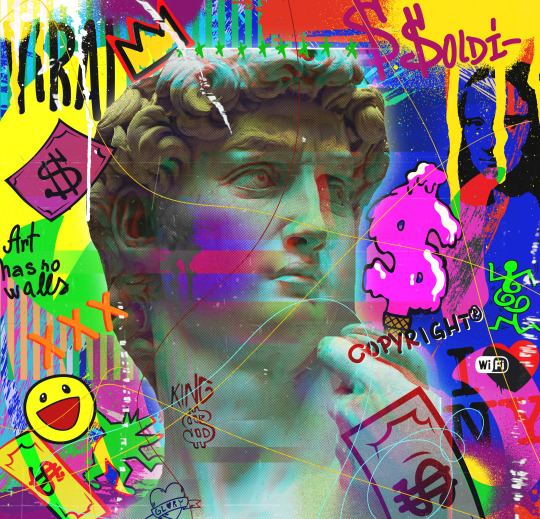
#street#sprayart#urban#popart#wall#comicbook#art#graffiti#instagraffiti#artwork#mural#streetartistry#roman#gallery#Michelangelo#david#Renaissance
2 notes
·
View notes
Text

1 note
·
View note